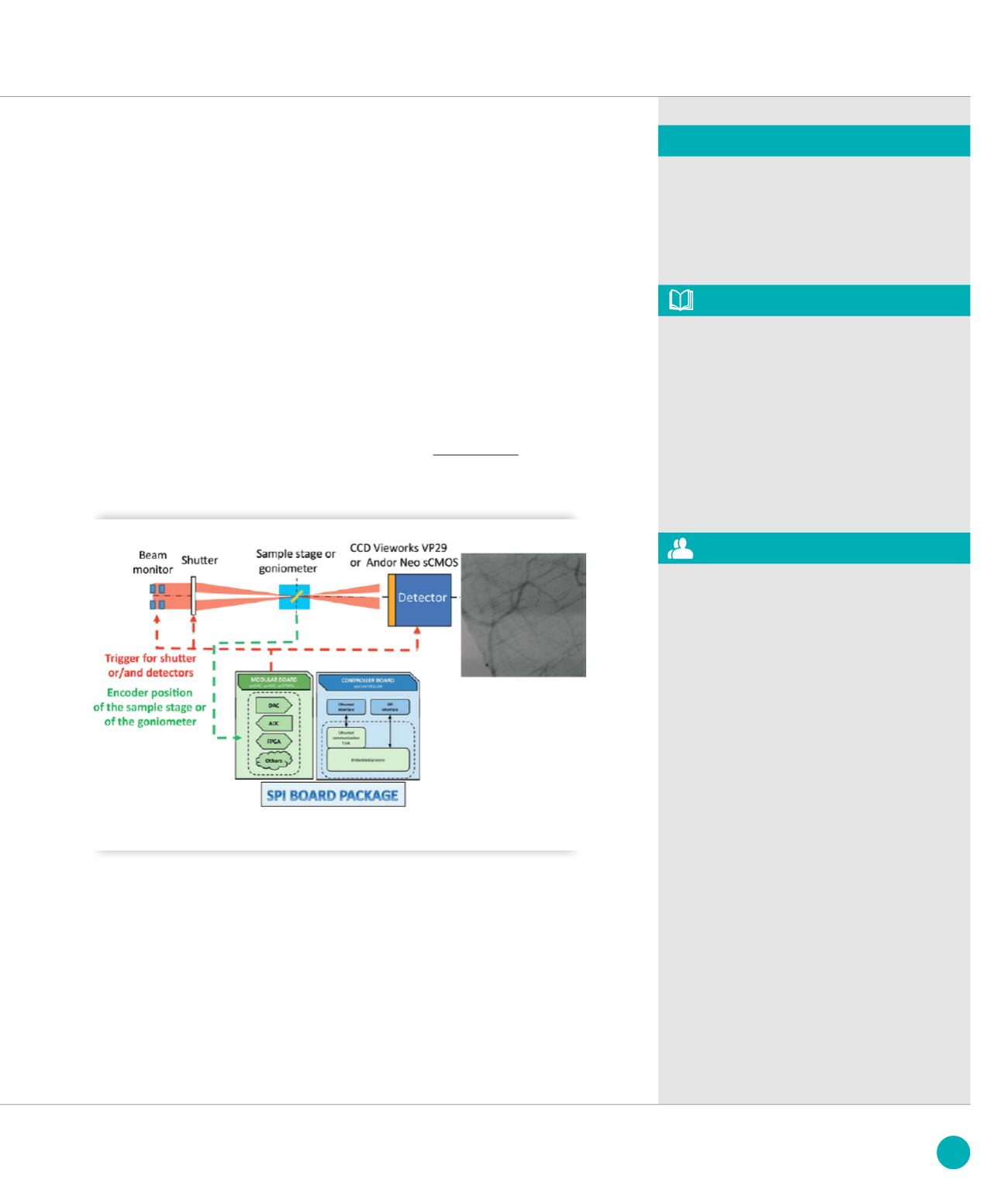
achieved in less than 200ms and enables
a reduction of the noise resulting from the
drift in environmental conditions (beam
orbit drift, temperature, even the sample
itself).
In the second domain, the aim is to allow
simultaneous acquisition on one or more
detectors in correlation with sample
scanning.
On the PROXIMA 1 beamline which studies
the 3D structure of protein molecules, a
SPI platform opens a shutter and triggers
the acquisition of a Pilatus pixel array
detector and an X-ray beam position
monitoring system once the goniometer
has reached its nominal speed. In this case
the SPI platform reads a position encoder
and performs calculation before sending
digital output to open the shutter and to
trigger the detectors. Synchronized images
and corresponding beam metadata can
be obtained in a rapid (10ms) timescale.
On the METROLOGY beamline, the
IPANEMA team has used a similar platform
to trigger cameras based on the sample
stage position to achieve a tomographic
experiment (Figure
➋
). In this case the
time spent for each dataset collection
is between 5 to 20 min for 2500 to 7000
images collected and a total of up to 180
GB of raw data. We gain a factor of 20
in comparison to traditional step by step
scanning method.
Today 18 SPI platforms are in operation
in SOLEIL with different configurations
and many other future uses can be
imagined. The SPI Board package
is developed as an open hardware
development and shared under CERN OHL
V1.1 license on
.
Control & Data Acquisition
Computing and Electronics Group
ASSOCIATED PUBLICATION
Y.M. Abiven*, P. Betinelli, J. Bisou, F. Blache,
S.X. Cohen, P. Gourhant, N. Leclercq,
F. Langlois, F. Marteau, P. Ohresser,
and A. Thompson
* Synchrotron SOLEIL, l’Orme des Merisiers,
St Aubin BP48, 91192 Gif sur Yvette Cedex,
France
CORRESPONDING AUTHOR
➋
Synchronous acquisition with the sample position or movement
115
SOLEIL
HIGHLIGHTS
2013


